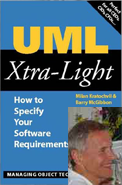IT arkitektur
What’s wrong with repairs?

That’s a question, let go just a rhetoric one. Copy-pasting most of what I wrote in this Swedish article in Ny Teknik, 7½ years back, would still work: since then, rather few business-to-consumer industries have replaced the disposable-product mentality, poor quality, and short product lifecycles. But, it’s finally turning.
Currently, several global companies (including Ikea or Electrolux) are reshaping their business models toward not only recycling but also easy-to-replace parts – to extend both configurability/variability/customizability and lifecycles. For product architects, systems, and processes, this means increased priority of design-to-configure, and of swap-out/swap in parts.
Hopefully, most enterprise architects understand it’s high time. Especially now that demand is losing momentum world-wide, it’ll pay off: an increased proportion of after-sales, parts, services, and customer guidance (on component swaps and similar simple repairs) can compensate for some drop in demand for new complete products.
Many, if not most, business-to-business industries started this journey decades ago: trucks & busses and other transportation equipment, industrial automation, or telecom infrastructure, to name just a handful.
In software architecture, we entered more recently: components, SOA, microservices, variability mechanisms (not least configurability and postponed variant-binding time)…
Therefore, most product architects in a number of other industries might find their SW architectures only “almost ready” for the imminent quick transition toward flexible product architecture and configure-to-order.
Their points of similarity and mutual influence are covered in Informator´s course. If you’ve attended the Agile Architecture course recently, you might remember it’s called Modular-Product Line Architecture.
